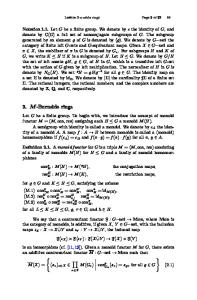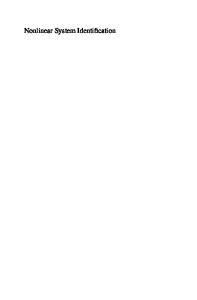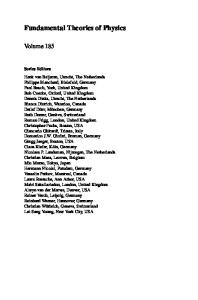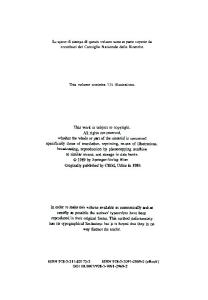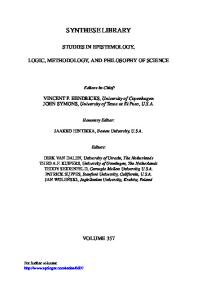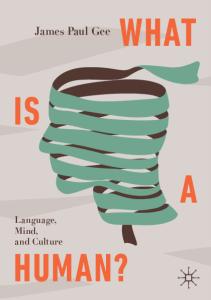Computational aspects of Burnside rings part II: important maps
- PDF / 375,357 Bytes
- 20 Pages / 439.37 x 666.142 pts Page_size
- 51 Downloads / 352 Views
Computational aspects of Burnside rings part II: important maps Martin Kreuzer1 · Dilip P. Patil2 Received: 13 December 2019 / Accepted: 3 August 2020 © The Managing Editors 2020
Abstract The Burnside ring B(G) of a finite group G, a classical tool in the representation theory of finite groups, is studied from the point of view of computational algebra. In the first part (cf. Kreuzer and Patil, Beitr Algebra Geom 58:427–452, 2017) we examined the ring theoretic properties of B(G) using the methods of computer algebra. In this part we shift our focus to important maps between two Burnside rings and make several well-known maps of representation theory explicitly computable. The inputs of all our algorithms are the tables of marks of the two groups, and the outputs are matrices of integers representing the maps via their image in the ghost ring. All algorithms have been implemented in the computer algebra system ApCoCoA and are illustrated by applying them to explicit examples. Especially, we study the restriction and induction maps, the projection and inflation maps, the conjugation isomorphism, and the Frobenius-Wielandt homomorphism. Keywords Burnside ring · Table of marks · Restriction map · Induction map · Projection map · Inflation map · Frobenius-Wielandt homomorphism Mathematics Subject Classification Primary 19A22; Secondary 13F99 · 13P99 · 20C40
Contents 1 Introduction . . . . . . . . . . . . . . . . . . . . . . . . . . . . . . . . . . . . . . . . . . . . . . . 2 The restriction map . . . . . . . . . . . . . . . . . . . . . . . . . . . . . . . . . . . . . . . . . . . . 3 The induction map . . . . . . . . . . . . . . . . . . . . . . . . . . . . . . . . . . . . . . . . . . . .
B
Dilip P. Patil [email protected] Martin Kreuzer [email protected]
1
Fakultät für Informatik und Mathematik, Universität Passau, 94030 Passau, Germany
2
Department of Mathematics, Indian Institute of Science, Bangalore 560 012, India
123
Beitr Algebra Geom 4 The projection and inflation maps . . . . 5 The conjugation isomorphism . . . . . . 6 The Frobenius-Wielandt homomorphism References . . . . . . . . . . . . . . . . . .
. . . .
. . . .
. . . .
. . . .
. . . .
. . . .
. . . .
. . . .
. . . .
. . . .
. . . .
. . . .
. . . .
. . . .
. . . .
. . . .
. . . .
. . . .
. . . .
. . . .
. . . .
. . . .
. . . .
. . . .
. . . .
. . . .
. . . .
. . . .
. . . .
. . . .
. . . .
. . . .
1 Introduction The Burnside ring, first introduced in Burnside (1911), is one of the main tools in the representation theory of finite groups. Most of the interest in this topic has focused on studying its theoretical uses [for an overview, see for instance (Bouc 2000) or (Karpilovsky 1995)]. There have also been efforts to compute the tables of marks of many finite groups, which in turn provide presentations of their Burnside rings using generators and relations. These efforts have mostly revolved around the computer algebra system GAP (see GAP 2014). In the first part of this paper [cf. Kreuzer and Patil (2017
Data Loading...
